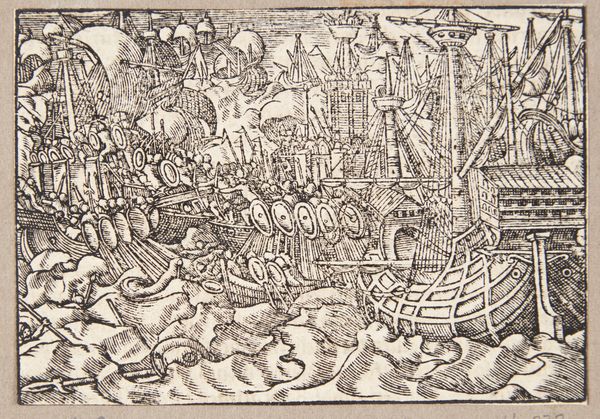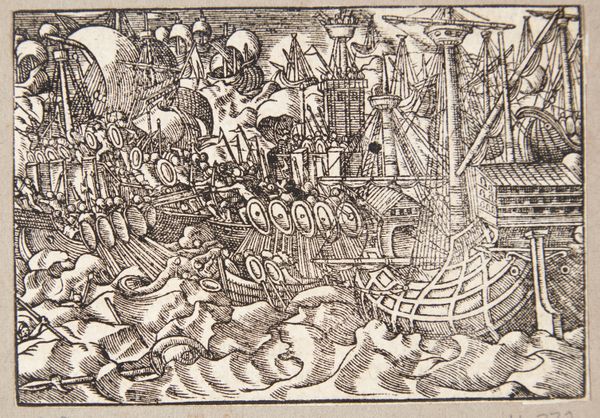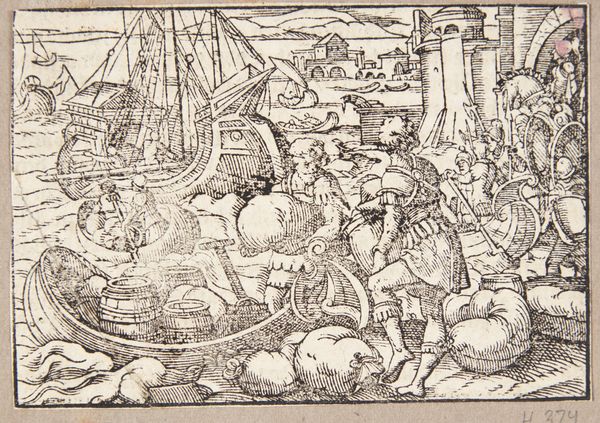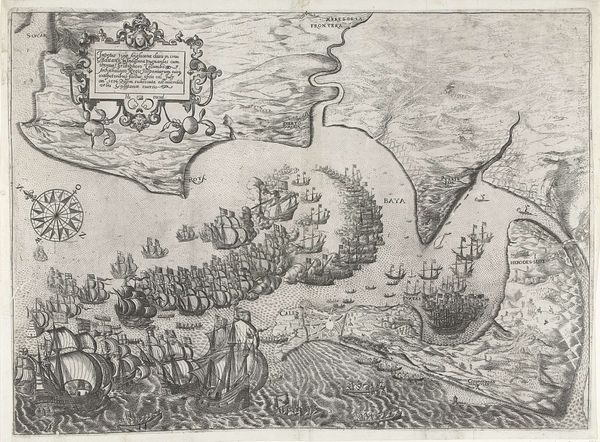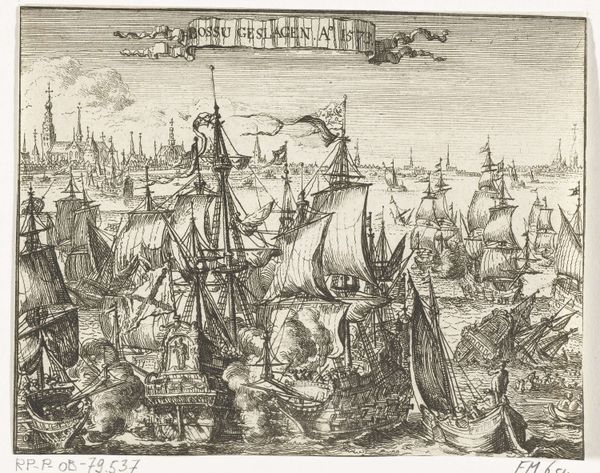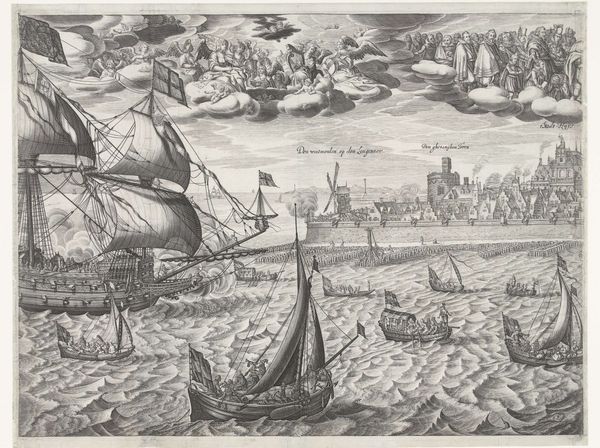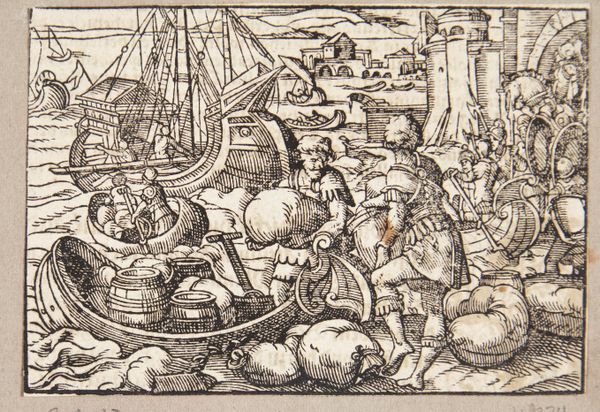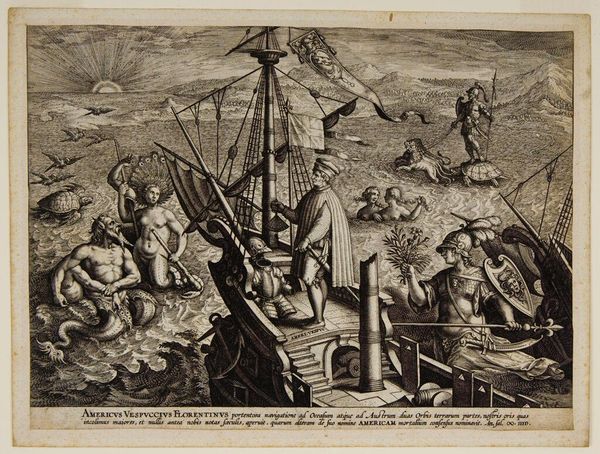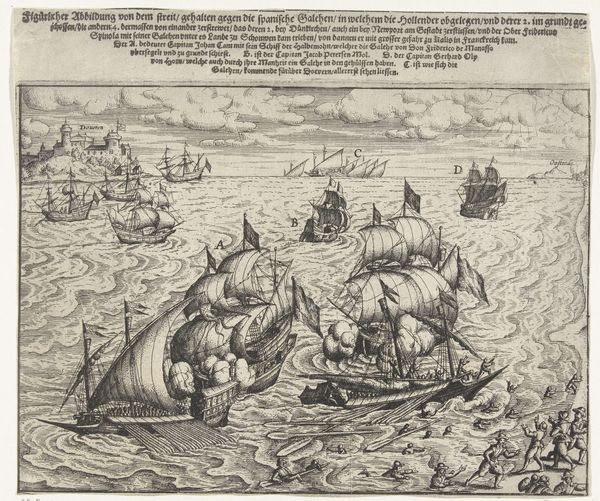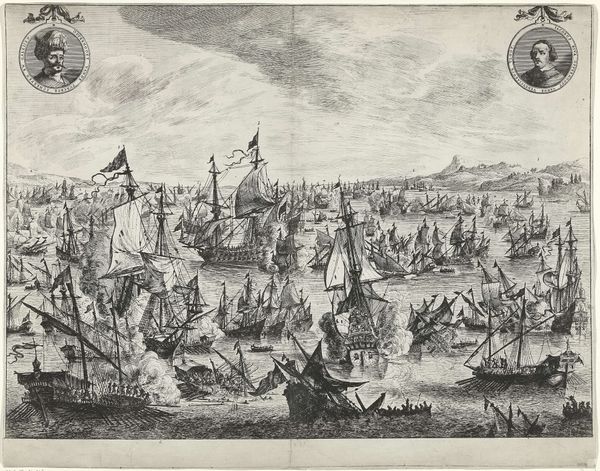
Gaius Duillius sejrer i et søslag over kartaginienserne 1574
0:00
0:00
print, woodcut
#
narrative-art
# print
#
landscape
#
mannerism
#
figuration
#
woodcut
#
history-painting
Dimensions: 75 mm (height) x 105 mm (width) (bladmaal)
Editor: Here we have Tobias Stimmer’s 1574 woodcut, “Gaius Duillius Triumphs in a Sea Battle Over the Carthaginians”. It feels incredibly detailed, chaotic even, but in a way that draws you in. What strikes you when you look at this piece? Curator: I’m immediately drawn to the labor involved in producing this image. Think about the precise, painstaking process of carving this intricate design into a woodblock. Each line represents a physical act, a decision about what to reveal and what to leave untouched. The stark contrast created through the woodcut method highlights the struggle inherent in production - a battle between the artist and the material itself. Editor: That’s fascinating, I hadn’t thought about the physical labor so directly. How does that connect to the subject matter? Curator: Well, consider what’s being depicted: a naval battle. There’s a clear parallel between the act of carving, with its aggression and removal of material, and the destructive force of warfare. Both involve the manipulation and ultimately the transformation, often violent, of matter. We see ships, resources, even bodies transformed through conflict. Moreover, consider the role of prints in disseminating political narratives and shaping public opinion – how does this impact the consumption of art? Editor: So the woodcut, as a medium, almost mirrors the message of the artwork itself. It's about transforming raw materials, whether it's wood or nations, through labor and conflict. Curator: Exactly. And understanding that connection reveals how deeply the means of production are embedded in the work's meaning. It makes you question the choices that led to both the battle, and to the carving. Editor: I will never see a woodcut the same way, after this; I’ve always loved the aesthetic but never thought of the act of making art being so closely aligned with warfare in both physical labour and concept! Thank you! Curator: And for me, thinking about your experience and background really encourages me to make the materials that the artists were actually using be a larger part of the consideration process. Thank you for your perspectives as well.
Comments
No comments
Be the first to comment and join the conversation on the ultimate creative platform.

